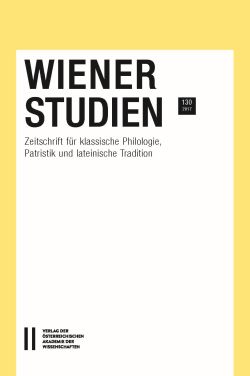
Wiener Studien 130/2017, pp. 361-380, 2017/06/26
Zeitschrift für Klassische Philologie, Patristik und lateinische Tradition

The Anthologia Salmasiana contains a section that is clearly defined in the manuscript and displays features of a well-considered arrangement (Anth. Lat. 7 – 190 Shackleton Bailey = 20 – 199 Riese): this section is introduced by a praefatio; poems related in form and content are grouped together, while poems of diverse topics and by various authors are connected by a kind of concatenatio; especially at the beginning and end of this section, there are poems with a focus on juridical themes, which have aspects of form and content in common. Some of these features of arrangement are also found in the so-called Peiper-libellus (Anth. Lat. 78 – 188 S. B. = 90 – 197 Riese). This, together with the fact that it integrates also stone-inscriptions, makes it highly probable that the Peiper-libellus is not an epigram book by a sole author, but itself an anthology.